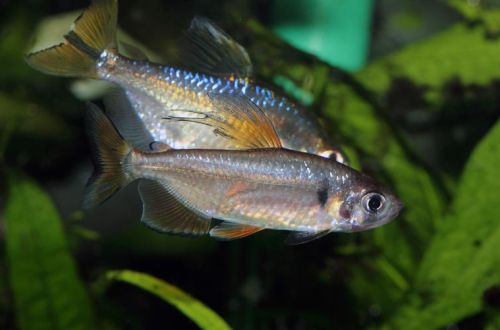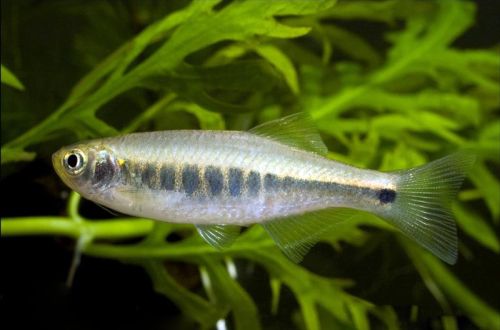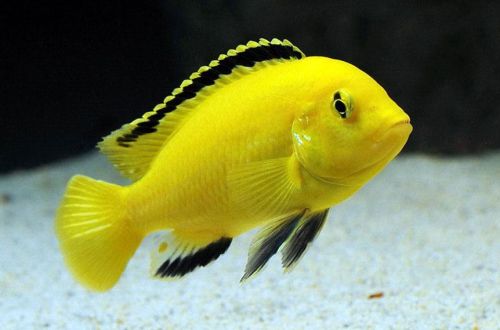
Alestopetersius red
Alestopetersius red, scientific name Alestopetersius nigropterus or Alestopetersius ansorgii, belongs to the family Alestidae (African tetras). At the time of writing, this fish is considered an unclassified species, therefore it is identified under several names. However, this does not prevent it from being actively exported; it can often be seen on sale. Relatively easy to keep, does not require a large aquarium, perfectly compatible with other species.

Contents
Habitat
Comes from central Africa. There is no exact information about the natural range of distribution of this species. Presumably inhabits the Congo Basin. Wild specimens are sold from Kinshasa, the capital of the Democratic Republic of the Congo.
Brief information:
- The volume of the aquarium – from 100 liters.
- Temperature – 22-26°C
- Value pH — 5.0–7.0
- Water hardness – 1–10 dGH
- Substrate type – any
- Lighting – subdued, moderate
- Brackish water – no
- Water movement – moderate
- The size of the fish is 5–6 cm.
- Food – any food
- Temperament – peaceful
- Keeping in a group of 8-10 individuals
Description
Adults reach a length of 5–6 cm. Males are somewhat larger and have an elongated dorsal fin. Body color is reddish. The tips and edge of the fins are dark. Females are smaller in size, the predominant colors in the coloration are silvery.
Food
Not demanding on the composition of food. They accept a variety of foods designed for aquarium fish. The daily diet may consist of dry foods in the form of flakes, granules, combined with live or frozen brine shrimp, daphnia, bloodworms, etc.
Maintenance and care, arrangement of the aquarium
The optimal size of the aquarium for a group of 8-10 fish starts from 100 liters. The choice of decor is not critical, however, the fish will look better in a setting that resembles a natural habitat – a moderately flowing river and a substrate of sand and stones of varying sizes, several large boulders. Driftwood and aquatic plants can also be used in the design, but you should not get carried away too much, you need to save free areas for swimming.
Alestopetersius red is sensitive to water quality, especially in freshly exported fish. When keeping it is necessary to avoid sharp fluctuations in temperature and hydrochemical parameters (pH and dGH), which must always be in the optimal range of values.
Behavior and Compatibility
Peaceful schooling fish, prefer to be in a group of at least 8-10 individuals. Somewhat shy, so do not combine with too active species. Other non-predatory fish living in similar habitats in nature will become excellent neighbors. It can be some cyprinids, African river cichlids, loach fish and others.
Fish diseases
Diseases inherent in this particular species of fish were not noted. When kept in suitable conditions (high water quality, balanced diet, non-conflict neighbors, etc.), health problems are not observed. The most common cause of disease is the deterioration of conditions leading to immune suppression, which makes the fish susceptible to infections that are invariably present in the surrounding area. When the first signs of an illness are detected (lethargy, exhaustion, refusal of food, lowered fins, etc.), it is necessary to immediately check the main parameters of the water. Often, the restoration of acceptable living conditions contributes to self-healing, but if the fish is too weak or has received obvious damage, medical treatment will be required. For more information on symptoms and treatments, see the Aquarium Fish Diseases section.





